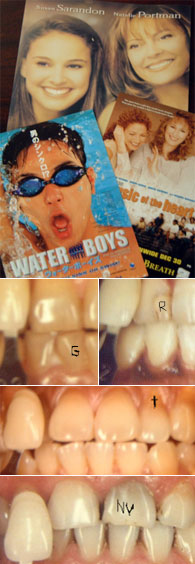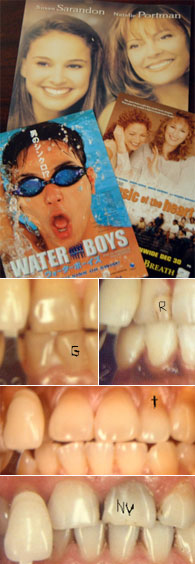The demand for aesthetic dentistry has risen over the years. More adults are seeking dental treatment to improve their smile through tooth-straightening procedure as well as tooth-whitening procedures. Bleaching (tooth-whitening) has been so popular that there are varieties of options for the individuals to select, ranging from a d-I-y kit to a comprehensive chairside treatment at the dental clinic. This treatment option has been shown to be effective, relatively safe and satisfactory.

Teeth can be bleached (whitened) through the use of bleaching agents. Hydrogen peroxide has been the choice agent for over a century; followed by carbamide peroxide. Innovative light technology has been used to activate the hydrogen peroxide; breaking down into water and oxygen; so as to speed up the whitening procedure. Depending on the temperature, pH, light, catalysts or other conditions, the oxidation process releases free radicals to remove the double bonds of chromophoric organic molecules to form more soluble; lighter coloured compound.
A wide selection of home bleaching products in the market offers carbamide peroxide (10-20% concentration) or hydrogen peroxide (3-10% concentration) gel as the agent. Carbamide peroxide will break down to urea and hydrogen peroxide eventually; while only the hydrogen peroxide will initiate the oxidation process followed by tooth whitening.
Tooth-whitening paste is available over the counter but is not very effective as a stand-alone bleaching agent. Often it is prescribed after the conventional tooth-whitening procedures as an adjunct. The special toothpaste usually contains a higher percentage of abrasives and a low concentration of hydrogen peroxide.
How white can the teeth be bleached?
Regardless of the colour measurement method, most studies have shown a significant difference in colour change after treatment - a minimum of 2 shades change. Yellow to yellowish brown teeth bleached most quickly and completely (takes 2 to 4 weeks) while tetracycline-stained teeth have shown to have lesser response (takes up to 6 months).

Are all types of stain easily removed by bleaching?
Teeth staining often presents in different forms. The most common ones are extrinsic stain due to diet, smoking, discoloured restorations (R) or poor oral hygiene. Intrinsic stains could be due to genetic (G) or developmental defect e.g. fluorosis (excessive intake of fluoride), tetracycline staining (t), or a dead or dying tooth (NV).
So far, almost all the different stains could be improved with bleaching except tetracycline (antibiotic) stained teeth. They require repeated treatment to get a more satisfactory result. Some of the routine bleaching result can be seen below.
